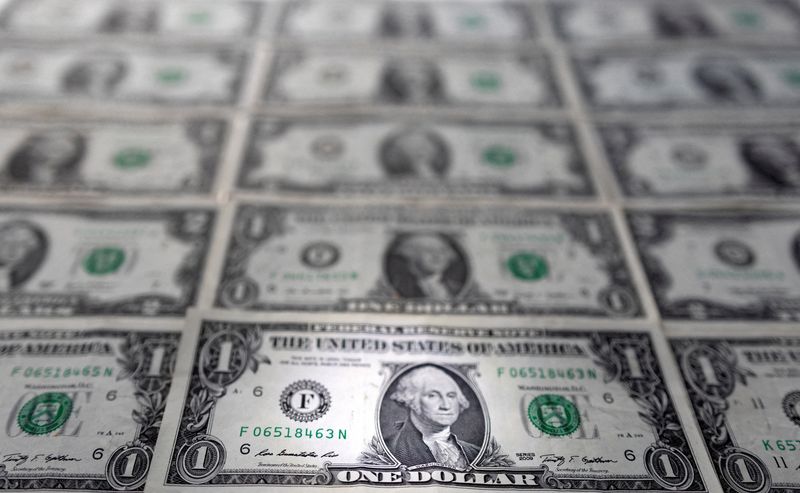Fraying central bank consensus spurs dollar and market stress:

© Reuters. FILE PHOTO: U.S. dollar banknotes are displayed in this illustration taken, February 14, 2022. REUTERS/Dado Ruvic
By Jamie McGeever
ORLANDO, Fla. (Reuters) -The highest inflation in decades is unraveling whatever policy consensus there was between the world’s major central banks since the Great Financial Crisis and global markets could buckle under resulting waves of stress and volatility.
A turbo-charged dollar, which often both reflects and fuels financial market stress, risks a vicious cycle as a scramble for dollars intensifies, tightens global financial conditions and increases volatility.
The dollar’s surge to its strongest level in 20 years not only reflects how aggressive investors expect the Federal Reserve to be in raising interest rates, but also how fragmented the global central bank landscape is.
While the U.S. monetary authority appears strapped in for the most aggressive tightening cycle since 1994 both in scale and speed, others are at various stages of the battle against inflation, and with varying degrees of appetite for the fight.
The Fed’s expected path stands in stark contrast to its three biggest peers. Central banks in Japan and China are still easing policy and the European Central Bank will struggle with its plans to tighten amid recession fears from a Ukraine-related energy shock.
Whatever path major central banks follow, the burst of global inflation and fragmented policy response has put a fire under global market volatility – U.S. Treasuries implied volatility is the highest since 2009 and global financial conditions are also the tightest in 13 years.
As analysts at Bank of America (NYSE:) put it, two years of pandemic-fueled quantitative easing worth around $11 trillion globally is ending and markets’ ‘volatility anchor’ has been removed, threatening the disorderly moves in rates and currency markets that policymakers are desperate to avoid.
“Market panics (are) often associated with divergent central bank policy objectives,” BofA wrote on Friday.
$1 TRILLION DEBT
The , a measure of the greenback’s value against six major currencies, is the highest since 2002. Although it has risen rapidly this year and may be due a profit-taking pause, many analysts reckon it still has room to appreciate further.
A stronger dollar makes it more expensive to service dollar-denominated debt for overseas borrowers. According to Institute of International Finance estimates, well over $1 trillion of dollar debt held in emerging economies will mature by the end of next year.
A rising dollar and U.S. borrowing costs have slammed global financial markets – the just had its worst January-April performance since the 1930s, while U.S. bond market volatility and Goldman Sachs (NYSE:)’s global financial conditions index are the highest since 2009.
The additional problem policymakers face is essentially the irrationality and herd-like behavior of financial markets. Once currency traders sense weakness or fracture, they…
Read More: Fraying central bank consensus spurs dollar and market stress:
